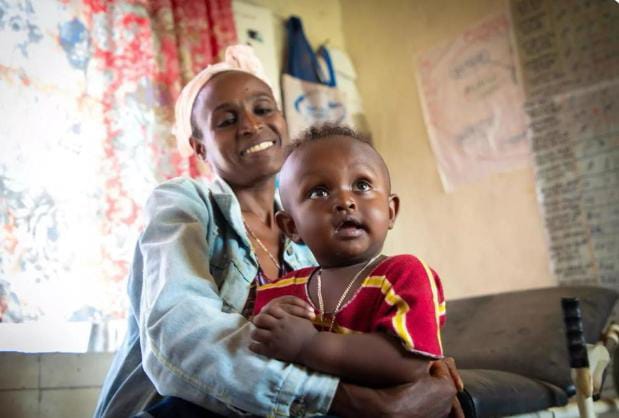UNICEF outlines five strategic actions to achieve a malaria-free world

(DDM) – Every day, over 1,200 children worldwide lose their lives to malaria, a disease that is entirely preventable and treatable.
Follow DDM Whatsapp channel to stay connected
🚀 *Launch your Tech Career, boost your income:*
Malaria continues to be one of the deadliest illnesses affecting children under the age of five, claiming more lives than any other infectious disease in this age group in sub-Saharan Africa.
The disease is caused by Plasmodium parasites, which are transmitted to humans through the bite of an infected female Anopheles mosquito.
According to UNICEF and WHO reports, malaria disproportionately affects vulnerable populations, particularly families in low-income communities with limited access to healthcare services.
Beyond its immediate health impact, malaria carries severe economic consequences.
It is estimated to cause approximately $12 billion in productivity losses every year, as parents are compelled to take time off work to care for sick children.
This economic burden further entrenches poverty, leaving families in a cycle of disease, lost income, and inadequate access to basic services.
Since 2015, global malaria cases have been on an upward trajectory, with a significant surge observed during the COVID-19 pandemic.
The pandemic disrupted healthcare delivery and led to declines in malaria prevention efforts, exacerbating the crisis in many countries.
Other factors driving this rise include reduced investments in malaria control programs, overstretched health systems, and conflicts that displace populations and limit access to care.
Additionally, the spread of invasive mosquito species has increased the geographic range of malaria transmission.
Climate change is predicted to further worsen the situation by creating favorable conditions for mosquito breeding, including warmer temperatures, higher rainfall, and altered ecosystems in previously low-risk areas.
Despite these challenges, medical advancements, particularly in malaria vaccines, combined with traditional prevention methods and treatments, provide a promising path toward a malaria-free world.
Such efforts not only save lives but also strengthen families and communities by allowing children to grow healthy and productive.
UNICEF has outlined five major strategies to combat malaria effectively and reduce child mortality globally.
Life-saving malaria vaccines
Malaria vaccines represent a historic breakthrough in the fight against a disease that has claimed millions of young lives over decades.
With support from UNICEF, 22 countries are either preparing to introduce, or have already begun rolling out, malaria vaccines as part of national immunization programs.
Two vaccines, RTS,S/AS01 and R21/Matrix-M, have been scientifically validated to reduce clinical malaria by about 75 percent when administered seasonally in high-transmission regions.
UNICEF, as the world’s leading vaccine provider, has been instrumental in coordinating these programs, ensuring vaccines reach even the most remote communities.
Pilot programs in Ghana, Kenya, and Malawi reached millions of children and recorded a 13 percent reduction in all-cause child mortality, highlighting the vaccines’ significant impact on child survival.
This development is seen by health experts as a historic milestone in the global effort to reduce childhood deaths from infectious diseases.
Mosquito bed nets
Sleeping under insecticide-treated mosquito nets remains one of the most effective and affordable methods to prevent malaria transmission.
These nets provide a protective barrier during the night, reducing exposure to the Anopheles mosquito, which typically bites during evening and nighttime hours.
UNICEF has been distributing mosquito nets for decades, providing over 500 million nets in more than 50 countries worldwide.
In 2023 alone, UNICEF distributed 13 million mosquito nets to high-risk communities, protecting millions of children and pregnant women from malaria infection.
Studies have shown that consistent use of insecticide-treated nets can reduce malaria incidence by more than 50 percent in endemic areas.
The nets are particularly vital in rural and low-income regions where access to healthcare and rapid treatment is limited.
Early malaria diagnosis and treatment
Prompt diagnosis and access to effective malaria treatment remain critical for child survival.
UNICEF works with governments and healthcare systems to provide rapid diagnostic tests and antimalarial medications as part of integrated child health programs.
These programs target malaria alongside other leading causes of child death, such as pneumonia and diarrhea, ensuring comprehensive care.
No child should survive malaria only to die from another preventable illness due to lack of healthcare infrastructure.
By strengthening health systems, training healthcare workers, and improving monitoring and reporting, UNICEF ensures that malaria and other childhood illnesses are managed effectively.
Countries such as Benin, Cameroon, Sierra Leone, and Burkina Faso have successfully implemented RTS,S vaccine programs, further demonstrating the feasibility of widespread vaccine adoption.
Community awareness and empowerment
Community engagement is essential in preventing malaria and ensuring early treatment.
UNICEF collaborates with local leaders, community health workers, women’s groups, youth networks, schools, and faith-based organizations to raise awareness about malaria prevention and control.
These efforts educate communities about the signs and symptoms of malaria, the importance of early diagnosis, and the adoption of preventive measures such as bed nets and indoor residual spraying.
UNICEF also works to dispel myths and misinformation that often hinder effective malaria control, using trusted community networks to disseminate accurate health information.
Through these initiatives, communities are empowered with the knowledge and tools to protect themselves and reduce the overall burden of malaria locally.
Partnerships for scale, innovation, and impact
UNICEF collaborates with governments, local organizations, international partners, and stakeholders to strengthen malaria control efforts worldwide.
Such partnerships facilitate the sharing of expertise, resources, and innovative solutions, including the introduction and scale-up of malaria vaccines.
Joint efforts help ensure that interventions reach large populations and are sustained over time, maximizing health outcomes.
By increasing countries’ capacity in prevention, diagnosis, and treatment, UNICEF and its partners aim to drive down malaria cases globally.
The organization envisions a malaria-free world where children are given the opportunity to grow healthy, attend school, and contribute to the development of their communities.
UNICEF’s ongoing commitment underscores the urgent need for global action, coordinated funding, and sustained health initiatives to eliminate malaria.
Health experts warn that without continued investment and innovation, millions of children will remain at risk, particularly in Africa and other high-transmission regions.
UNICEF’s five-pronged approach, vaccines, mosquito nets, early diagnosis and treatment, community awareness, and global partnerships, offers a comprehensive blueprint for achieving malaria eradication.
With sustained international support, scientific innovation, and community engagement, the dream of a malaria-free world may finally become a reality.
Post Views: 19





